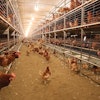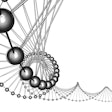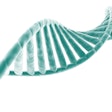Within the breeding department, it is important to collect accurate information on body composition such as fat deposition and muscle development. This data helps to better understand breeder performance and select traits that will result in good quality breeder eggs and high production. Typically, body composition data is collected by using ultrasound technology or during post-mortem analysis; however, these methods have their limitations. For example, post-mortem analysis only examines one part of the bird rather than the whole picture and how various body compartments balance together. A study was recently published in the Poultry Science Journal from the Hendrix Genetics Turkeys France R&D department on the use of CT scans to investigate the connection between body composition, sexual maturity, and the onset of lay.
This project was led by Marine Dewez, a PhD student, and was supervised by Dr. Sylvain Brière, Hendrix Genetics Turkeys France, and Dr. Pascal Froment from the INRA French research center of Nouzilly (PRC Team). The overall goal of the project was to monitor turkey breeders by using a non-invasive tool such as CT scanning to identify the major changes in body composition to then better understand the key factors for the onset of lay and improve the quality of the first eggs. We began by investigating the interrelations and changes between muscle, fat and bone tissues during rearing, photostimulation and early reproduction. The use of CT scanning is more commonly used in poultry to detect bone fractures or measure bone quality, especially in laying hens, but has not been widely applied on turkey breeders whole body composition monitoring.
From the images acquired, the team found that muscle volume is linearly proportional to body weight in accordance to genetic selection and that bone volume increases prior to the onset of lay, which could be an indication of calcium storage for eggshell formation. They also found that fat volume undergoes an intense remodeling through sexual maturation matching blood lipids circulation and high ovary development.
CT scanning technology provides new data on turkeys and offers a number of new possibilities for efficiency and welfare goals. With examination of inner body composition, the team can monitor how fat deposition, bone quality, and specific muscle development balance each other on the same animal throughout rearing and breeding, which is currently inaccessible with the sole measure of body weight. This could mean more accurate phenotyping to select for the best body composition, fat deposition to sustain reproduction, leg strength, and increase specific muscles yields. Using the findings from this trial the team may also look into adapting feeding strategies prior to the onset of lay for enhanced reproductive performances.
After the results of this innovative study, the team plans to continue to explore the potential of this technology all for the benefit of strong breeder performance and resulting excellent quality throughout the value chain.
Acknowledgement:
This project is realized under the CIFRE agreement and is realized with the contribution of Patrice ETOURNEAU (Hendrix Genetics Turkeys France) and Francois LECOMPTE (CIRE Platform, INRA of Tours).

















